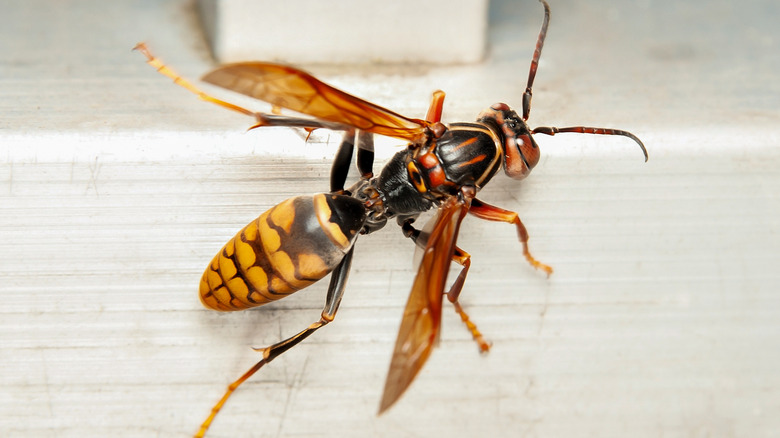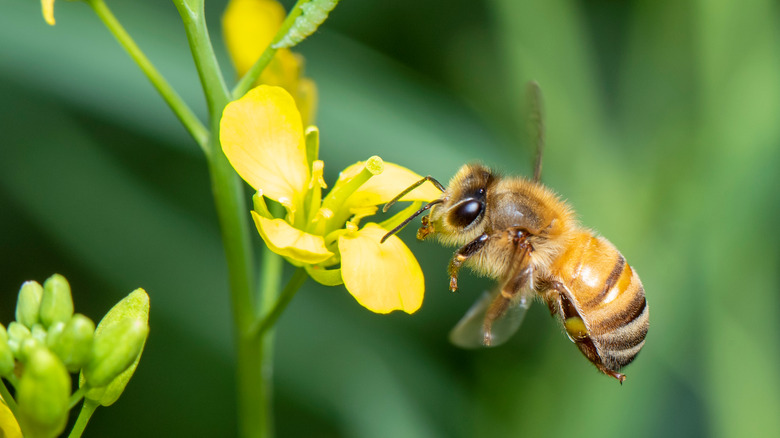What You Might Not Know About The Giant Japanese Hornet
At 2 inches long, the Asian giant hornet (nicknamed murder hornet) is the world's largest social wasp species (via USDA). Native to East Asia and Japan, the insect is invasive, per NPR. In 2019, the first record of the Asian giant hornet in the United States was found in Washington state, as well as nearby Vancouver Island, British Columbia (via Penn State Extension). According to National Geographic, no one is quite sure how the species ended up in the U.S. Nonetheless, its discovery in North America caused a flurry of panic (via National Wildlife Federation).
With their large yellow-orange head, teardrop-shaped eyes, sizable mandibles, and orange and black stripes, the Asian giant hornet has a distinct look that is often confused with other species, including the European hornet as well as the cicada killer wasp.
However, unlike those species, the Asian giant hornet builds nests underground. They can be found in dead tree trunks or tree roots, but never more than 3 to 6 feet off the ground. It's because of this that the nests are extremely difficult to find. As the insects are predatory, it's of great importance that they are stopped before they become widespread in North America and live up to their macabre nickname.
Asian giant hornets are killers
Per National Geographic, the Asian giant hornet is known to decimate honeybee colonies. Using their spiked-shaped mandible, they decapitate the bees and fly away with their thoraxes to feed their offspring (via The New York Times). This is referred to as "the slaughter phase," and within 90 minutes, a small number of giant hornets can destroy the entire colony. They then live in the colony for days at a time as they feed off the pupae and larvae.
Although European honeybees have no defense against this killer species, Japanese honeybees do. Forming a ball against the predator, they beat their wings to create heat and raise carbon dioxide levels (via Penn State Extension). As the heat inside reaches over 115 degrees Fahrenheit, the hornet is suffocated and cooked.
Although they generally do not attack humans, it does happen from time to time. In Japan, 30 to 50 people die annually from the hornet's sting. Moreover, their stingers can even puncture a beekeeping suit and the pain can be excruciating. In 2013, 42 people died in one Chinese province after being stung. There is even evidence of the sting causing necrosis and death due to kidney failure, according to a study published in Clinical Toxicology.
If the population of Asian giant hornets spreads, it's impact on the already-diminishing populations of honeybees is unknown. According to the National Wildlife Federation, early detection and a rapid response is the best solution when it comes to eradication. In addition, strategies used by Asian beekeepers could also be implemented.

